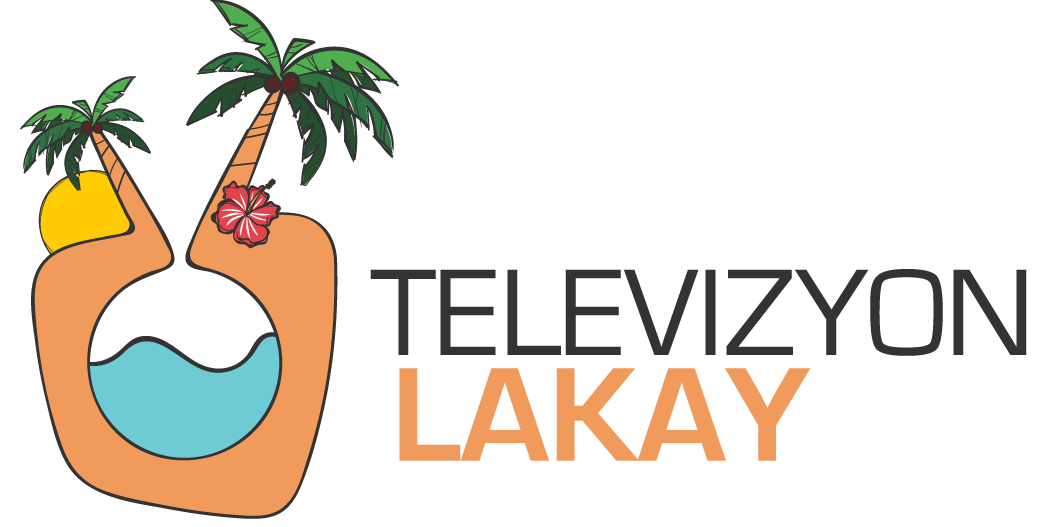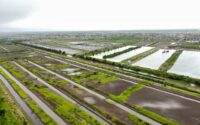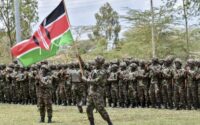Billions in carbon revenues helping Amerindian communities with economic, social, cultural advancement
 neil@newsroom.gy
neil@newsroom.gy
Over the last year, $3.8 billion in payments were made to 232 indigenous communities across Guyana, and it’s helping them to develop and implement projects for their economic, social, and cultural advancement.
Essentially, they decide what projects they need, and they get the money to do it.
The money comes from revenues Guyana earns because it has preserved the rainforest, which blankets over 85% of the country’s landmass.
Melena Pollard, a Toshao (or elected village leader), says the fact that all decisions start and end with the villages goes both to the letter and spirit of Free, Prior, and Informed Consent (FPIC), the international legal principle which dictates that communities have the right to give or withhold their consent to projects, laws, or policies that may affect them or their land.
“For me, this entire process has ‘screamed’ FPIC, not only talked about it,” Toshao Pollard recently told the News Room from her village River’s View, which offers scenic views of the Essequibo, Mazaruni, and Cuyuni rivers and overlooks Bartica, the mining town of Region Seven.
River’s View serves as an ideal example of how the payments have been transforming communities in various ways. We’ll get to that after a bit of background.
</p>
<p>” data-medium-file=”https://i0.wp.com/newsroom.gy/wp-content/uploads/2024/04/14.jpg?fit=300%2C169&ssl=1″ data-large-file=”https://i0.wp.com/newsroom.gy/wp-content/uploads/2024/04/14.jpg?fit=1024%2C576&ssl=1″ class=”size-full wp-image-179743″ src=”https://i0.wp.com/newsroom.gy/wp-content/uploads/2024/04/14.jpg?resize=1170%2C658&ssl=1″ alt=”” width=”1170″ height=”658″ srcset=”https://i0.wp.com/newsroom.gy/wp-content/uploads/2024/04/14.jpg?w=1920&ssl=1 1920w, https://i0.wp.com/newsroom.gy/wp-content/uploads/2024/04/14.jpg?resize=300%2C169&ssl=1 300w, https://i0.wp.com/newsroom.gy/wp-content/uploads/2024/04/14.jpg?resize=1024%2C576&ssl=1 1024w, https://i0.wp.com/newsroom.gy/wp-content/uploads/2024/04/14.jpg?resize=768%2C432&ssl=1 768w, https://i0.wp.com/newsroom.gy/wp-content/uploads/2024/04/14.jpg?resize=1536%2C864&ssl=1 1536w” sizes=”(max-width: 1170px) 100vw, 1170px” data-recalc-dims=”1″><figcaption class=) “For me, this entire process has ‘screamed’ FPIC, not only talked about it,” says Riverview Toshao Melena Pollard (News Room Photo)
“For me, this entire process has ‘screamed’ FPIC, not only talked about it,” says Riverview Toshao Melena Pollard (News Room Photo)
A bit about carbon credits
The money is paid to the communities from the second phase of the Low Carbon Development Strategy, called LCDS 2030. This strategy is the plan by which the government intends to develop Guyana while upholding its promise to protect the natural environment.
The money they are getting is separate from the billions that go into the development of the communities through the Ministry of Amerindian Affairs, which is especially set up to spearhead Amerindian development.
In 2022, Guyana became the first country to be issued carbon credits on a jurisdictional or national scale. The credits serve sort of like coupons that you exchange for something tangible.
How did this carbon trading scheme come about?
Forest-rich countries like Guyana argued for decades that their forests trap carbon dioxide, one of the heat-trapping gases that destroys the atmosphere and causes temperatures to rise. This rise in temperatures has led to more disasters such as floods, wildfires, and hurricanes. If these forests were cut down, then all that carbon would further worsen the climate crisis.
So forest countries have told big, wealthy nations and companies which damage the environment because of the harmful gases released through their operations, to reward countries which have forests and trap these harmful gases.
Out of that crusade by forest countries, a mechanism called ART TREES was developed. It’s that which basically measured, monitored, and verified the amount of carbon stored in Guyana’s trees and then issued carbon credits, or coupons, as mentioned before.
HESS, the American oil company, decided to put in a proposal and bought 1/3 of the credits issued to Guyana, valued at US$750 million. This enabled Budget 2023 to be the first national budget in Guyana’s country’s history to be supported by the sale of carbon credits.
The first payment made by Hess from its commitment was US$150 million and that made up four percent of the budget. It was determined that 15% of the carbon payments would go to indigenous communities.
Guyana has nine indigenous nations, and they make up about 10 per cent of Guyana’s population.
“Today, each Amerindian village has shaped and endorsed the future they want for themselves and, with this Government, they have financing to make it happen,” Dr Ashni Singh, Minister of Finance, said in his 2024 budget speech.
So, what’s happening at River’s View?
The village is experiencing a remarkable transformation, fuelled by the payments it has received from Guyana's sale of carbon credits.
Melena Pollard, a longstanding toshao, or village leader, has been at the forefront of River’s View's revitalisation efforts.
Reflecting on her motivation, Pollard said: "When I saw how it is my village was being run and run down... I decided that it will be a good opportunity for me to try and see if I can make a difference."
Her determination has proven instrumental in leveraging carbon credit funds to address critical infrastructure needs and uplift the community.
One of the most notable projects is the reconstruction of the village stelling, a vital lifeline for residents accessing essential services and education.
Pollard vividly described the dire state of the old stelling, likening it to "loose teeth in your mouth”, saying it was “ very shaky, and it wasn’t safe at all."
However, with the infusion of funds, the stelling now stands as a symbol of safety and progress, ensuring the well-being of school children and villagers alike.
Moreover, River’s View now boasts a modern two-story multipurpose hall, complete with a village office. Cultural activities are important for the way of life of people of River’s View, so getting a proper stage to facilitate these events was important.
Toshao Pollard reflected on the situation with the stage that existed prior to 2023.
“It was built some time ago, and the material started rotting.
“So, in 2022 when we had heritage celebrations, one of the young ladies actually fell through it!”
The village decided on some repairs, but “when the guys touched it, the whole thing felt apart.”
What did the village decide?
“We had to cancel the repairs and build a totally new stage.”

The allocation of funds from carbon credit sales not only addresses immediate infrastructure needs but also paves the way for long-term sustainable development.
Pollard outlined the village's vision for the future, which includes investments in skills training, eco-tourism, and other ventures aimed at enhancing economic opportunities while preserving the surrounding rainforest ecosystem.
Central to Guyana's Low Carbon Development Strategy is the recognition of indigenous communities' vital role in forest preservation.
Pollard highlighted the symbiotic relationship between the forest and indigenous livelihoods.
"The forest is providing the means for us to keep living. Without it, us Amerindians wouldn’t have food, we wouldn’t have shelter, we wouldn’t have clothing."
The allocation of funds to indigenous communities acknowledges their historic stewardship of the land and reaffirms their rights to self-determination.
However, there remains criticism of the carbon credits scheme and its use in Amerindian communities, with the Amerindian Peoples Association (APA) being the most vocal.
But Toshao Pollard says the scheme represents a beacon of hope for indigenous communities like River’s View, offering not only economic opportunities but also a platform for asserting their rights and preserving their cultural heritage. Toshao Pollard said what happens in villages should be left to those who actually live in the villages and not those, like the APA, who trump up FPIC when it is convenient.
Yes, she says there are a few dissenting voices, such as those who may unavoidably miss a meeting but then express dissatisfaction with what most villagers decided on.
“At the end of the day, it is people that will benefit or will lose. And I don’t like to see people lose because of one person’s foolishness.”
Toshaos in other communities have commended the payments being made.
This was clear when the News Room visited Fair View village in Region Nine.
It was at Fair View in 2009 that Guyana and Norway signed a forest-saving deal that was the highlight of the historic first phase of the LCDS.
Fair View values the commitment by the government to use funds earned because of safeguarding the forests to benefit indigenous communities.
“Not Fair View alone, but all the Amerindian communities in Guyana – it is important for every one of us.
“…we know we can get money year come, year goes.
“And that helps to build the economy of communities.
“Because we have funds coming that we can embark on project that would build a community and bring jobs to communities, so it is very important,” said Allicock.
He spoke about how the projects were decided on.
“We had consultations. We had a village meeting and we selected the priority projects we need.”
The funds are available to all communities – regardless of their size or location, and whether they have forests or not.
“For our community we don’t even have a bit of forest. We are generally just savannah and swamp, so the people are very happy for the percentage that was allocated.,” said Micah Davis, the village toshao of Toka in the North Rupununi.
River’s View, Fair View, Toka, and over 200 other Amerindian villages will soon begin receiving payments for this year.



